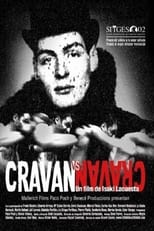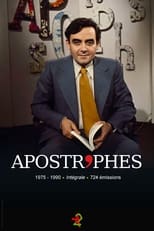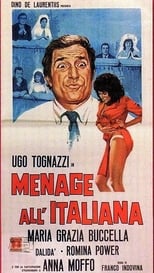

Eduardo Arroyo
Born: February 26, 1937
Died: October 14, 2018
in Madrid, Spain
Died: October 14, 2018
in Madrid, Spain
Eduardo Arroyo Rodríguez (26 February 1937 – 14 October 2018) was a Spanish painter and graphic artist. He was also active as an author and set designer. Arroyo is regarded as one of the most important exponents of politically committed realism.
Arroyo was born in Madrid and originally trained a journalist, graduating from School of Journalism, Madrid in 1958. Following his studies and growing contempt for the Francoist Spain, Arroyo emigrated to Paris at the age of 21. He originally began working as an author and journalist, but soon decided to devote himself to painting.
In Paris, he befriended members of the young art scene, especially Gilles Aillaud, with whom he later collaborated in creating stage sets, such as Vivre et laisser mourir ou la fin tragique de Marcel Duchamp, a work in eight pieces intended to criticize contemporary French art. He also befriended Joan Miró. In 1964, he made his breakthrough with his first important exhibition. He dominated the major post-Franco exhibition of Spanish art at the Venice Biennale of 1976. Over 20 years of critical and commercial success followed. In his old age, the ideologically and creatively uncompromising artist was as active as ever.
Stylistically, Arroyo's mostly ironic, colorful works are at the crossroads between the trends of nouvelle figuration or figuration narrative and pop art. A characteristic of his representations is the general absence of spatial depth and the flattening of perspective.
Arroyo also became known to a broad public through his many works as a set designer, as well as partially by his costume designs. In this relation, he cooperated since 1969 especially with the director Klaus Michael Grüber, who encouraged him in this activity. Arroyo created sets for, among others, the Piccolo Teatro in Milan, the Paris Opéra (in 1976, Richard Wagner's Die Walküre), the Schaubühne am Lehniner Platz in Berlin and the Salzburger Festspiele (in 1991, Leoš Janáček's Z mrtveho domu).
In 1982 he received Spain's National Award for Plastic Arts.
Arroyo's stage play, Bantam, premiered at the Bayerisches Staatsschauspiel (Residenztheater) in Munich with great success in 1986, with his friend, Grüber, as director and Ailland and Antonio Recalcati for sets and costumes.
Exhibiting since 1961, Arroyo's work has been shown in exhibitions across the globe, including the Neue Gesellschaft für Bildende Kunst, Berlin (1971); the Centre Pompidou, Paris (1982); Solomon R. Guggenheim Museum, NY (1984); Museum für Kunst und Kulturgeschichte, Dortmund, (1987); Institut Valencià d'Art Modern, Valencia (1989); Museo Nacional Centro de Arte Reina Sofía, Madrid (1998), and most recently held a solo exhibition at Fundación ENAIRE in Santander, Spain (2021–22). Arroyo's paintings are showcased at the Museo de Arte Contemporáneo in Madrid. His most renowned work, Vestido bajando la escalera, belongs to the collection of the Institut Valencià d'Art Modern, in València.
Source: Article "Eduardo Arroyo" from Wikipedia in English, licensed under CC-BY-SA 3.0.
Arroyo was born in Madrid and originally trained a journalist, graduating from School of Journalism, Madrid in 1958. Following his studies and growing contempt for the Francoist Spain, Arroyo emigrated to Paris at the age of 21. He originally began working as an author and journalist, but soon decided to devote himself to painting.
In Paris, he befriended members of the young art scene, especially Gilles Aillaud, with whom he later collaborated in creating stage sets, such as Vivre et laisser mourir ou la fin tragique de Marcel Duchamp, a work in eight pieces intended to criticize contemporary French art. He also befriended Joan Miró. In 1964, he made his breakthrough with his first important exhibition. He dominated the major post-Franco exhibition of Spanish art at the Venice Biennale of 1976. Over 20 years of critical and commercial success followed. In his old age, the ideologically and creatively uncompromising artist was as active as ever.
Stylistically, Arroyo's mostly ironic, colorful works are at the crossroads between the trends of nouvelle figuration or figuration narrative and pop art. A characteristic of his representations is the general absence of spatial depth and the flattening of perspective.
Arroyo also became known to a broad public through his many works as a set designer, as well as partially by his costume designs. In this relation, he cooperated since 1969 especially with the director Klaus Michael Grüber, who encouraged him in this activity. Arroyo created sets for, among others, the Piccolo Teatro in Milan, the Paris Opéra (in 1976, Richard Wagner's Die Walküre), the Schaubühne am Lehniner Platz in Berlin and the Salzburger Festspiele (in 1991, Leoš Janáček's Z mrtveho domu).
In 1982 he received Spain's National Award for Plastic Arts.
Arroyo's stage play, Bantam, premiered at the Bayerisches Staatsschauspiel (Residenztheater) in Munich with great success in 1986, with his friend, Grüber, as director and Ailland and Antonio Recalcati for sets and costumes.
Exhibiting since 1961, Arroyo's work has been shown in exhibitions across the globe, including the Neue Gesellschaft für Bildende Kunst, Berlin (1971); the Centre Pompidou, Paris (1982); Solomon R. Guggenheim Museum, NY (1984); Museum für Kunst und Kulturgeschichte, Dortmund, (1987); Institut Valencià d'Art Modern, Valencia (1989); Museo Nacional Centro de Arte Reina Sofía, Madrid (1998), and most recently held a solo exhibition at Fundación ENAIRE in Santander, Spain (2021–22). Arroyo's paintings are showcased at the Museo de Arte Contemporáneo in Madrid. His most renowned work, Vestido bajando la escalera, belongs to the collection of the Institut Valencià d'Art Modern, in València.
Source: Article "Eduardo Arroyo" from Wikipedia in English, licensed under CC-BY-SA 3.0.
Movies for Eduardo Arroyo...

Title: Cravan vs. Cravan
Character: Self - Spanish painter
Released: October 11, 2002
Type: Movie
In 1918, the poet and boxer Arthur Cravan disappears in the Gulf of Mexico without a trace. Today, another boxer and artist, film director Frank Nicotra, begins an investigation that will take you behind the mysterious steps Cravan from Switzerland to Mexico, passing through Paris, London and Barcelona.


Title: Apostrophes
Character: Self
Released: January 10, 1975
Type: TV
Apostrophes was a live, weekly, literary, prime-time, talk show on French television created and hosted by Bernard Pivot. It ran for fifteen years (724 episodes) from January 10, 1975, to June 22, 1990, and was one of the most watched shows on French television (around 6 million regular viewers). It was broadcast on Friday nights on the channel France 2 (which was called "Antenne 2" from 1975 to 1992). The hourlong show was devoted to books, authors and literature. The format varied between one-on-one interviews with a single author and open discussions between four or five authors.


Title: Menage Italian Style
Character: Momi
Released: December 22, 1965
Type: Movie
In Italy in the 60's it is difficult to get a divorce. Carlo gets a visit from his Swedish wife, but he is already remarried. Every time he meets a new woman, he vanishes away from the last wife.
